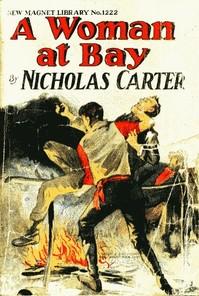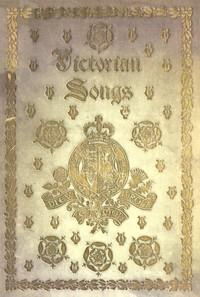Read this ebook for free! No credit card needed, absolutely nothing to pay.
Words: 15433 in 6 pages
This is an ebook sharing website. You can read the uploaded ebooks for free here. No credit cards needed, nothing to pay. If you want to own a digital copy of the ebook, or want to read offline with your favorite ebook-reader, then you can choose to buy and download the ebook.
shed together like tigers, jumping high over each other and endeavoring to stab one another with their artificial weapons. In the one fight witnessed both birds were soon bleeding profusely and had lost their desire to fight, so that the crowd called out some word and the cocks were picked up and "sicked" on each other again; this was repeated until one bird had enough and retreated ignominiously to the farthest corner of the pit, amid the shouts of the men who had bet on the other cock. In many cases, it is said, the vanquished bird is killed outright before he has time to retreat.
The sport, while rather exciting, is certainly demoralizing, especially with the betting that always accompanies it.
Such is the life of these simple people. Of course among the less civilized and the savage tribes conditions are very different, and a white man would not dare enter so intimately into the life of a barrio; in fact in some regions it is very unsafe to go outside of the army posts without a proper guard.
As to the character of the civilized Filipinos opinion seems to differ among the Americans of the Islands. That they are not yet capable of self-government seems to be almost universally believed by Americans who have lived among them; and that they are not energetic as a class is only what might be expected in such a climate. Some Americans have a rather high opinion of the moral character and general trustworthiness of the average native; others do not hold such a high opinion of him and consider him the inferior of the American negro, mentally, morally and physically. As students in the University of the Philippines it is said they compare favorably with students in American universities.
Doubtless there is as much variation, mental and moral, among the natives of the Philippine Islands as among the inhabitants of an Anglo-Saxon country, so that one's opinions are apt to be influenced by the class of natives with which he chiefly comes in contact.
After leaving the dock at Manila at sundown we steamed out of the bay, past the searchlights of Corregidor and the other forts which were sweeping entirely across the entrance to the bay in a way that would immediately expose any enemy that might attempt to slip by in the dark, and by nine o'clock we were headed in a south-westerly direction across the China Sea.
The next day we passed through winding passages along the Calamaines group where every hour brought to view new islands of the greatest beauty and of every size and shape. Upon one of these islands is a leper colony which we visited and found most interesting.
Early on the second morning we entered the harbor of the small but ancient village of Tay Tay on the eastern shore of Palawan. Not a white man lives in this inaccessible hamlet and it is seldom that one visits it, as there is no regular communication of any sort with the outside world.
The village consists of a dozen or two native huts along the beach in a very pretty grove of coconut trees. Back of the village is a range of low mountains covered with tropical jungle. The main point of interest is a well constructed fort of stone, built on a small promontory that projects out into the bay. The walls of the fort are very massive and are surmounted at each of the four corners by a round watch tower. On its land side the fort is entered through a narrow gate that leads by a stone stairway to the top of the promontory. On various parts of the walls are carvings and inscriptions showing that the different bastions were built at different times.
Within the fort and overlooking the walls is an old stone church whose roof has long since fallen in. Within the fort is also a large cement-lined, stone cistern to hold water in case of siege. The Spanish inscriptions on the walls show that the fort was begun about 1720, though the mission there was established about 1620. Lying about within the fort are a few large iron cannon that were doubtless used by the Spaniards in repulsing the attacks of the Moro pirates. It was for a refuge from these pirates that this old fort was built nearly two hundred years ago in this tiny, reef-protected harbor, on an island that even now is unknown to a large majority of American people although it is a part of our territory.
On the shore, just back of the fort, is another stone church whose roof has also fallen in; and back of this church is a small thatched bell tower with two very good bells of harmonious tones hanging in it. How long these bells have been silent it is difficult to say, but no priest now remains to carry on the work begun nearly three hundred years ago by the brave padres from Spain, and not a Spaniard now lives in that almost forgotten village. But for the moss-covered and still massive gray walls of the fort and the crumbling ruins of the two churches one would never imagine that this tiny village of brown men had ever been inhabited by subjects of the kingdom of Spain.
In passing out of the harbor of Tay Tay we visited a small volcanic island of curiously weathered and water-worn limestone. Except for a narrow beach the sides of this island are almost perpendicular, and the cliffs are honeycombed with dozens of water-worn caves. Many of these caves are of great beauty, resembling the interiors of stone churches; some extend far back into the dark interior of the island, others are lighted by openings at the top. Many of them are beautifully colored, and in an accessible region would doubtless be frequently visited by tourists, while in their isolated location it is possible that they had never before been visited by white men, unless in the old Spanish days. It is in these and in similar caves of this region that the natives obtain the edible birds' nests so highly prized by some, especially the Chinese. The natives are said to have claims on certain caves, and any one found stealing nests from another man's cave is supposedly dealt with as a thief.
Free books android app tbrJar TBR JAR Read Free books online gutenberg
More posts by @FreeBooks

: The Caravan Route between Egypt and Syria by Ludwig Salvator Archduke Of Austria Hesse Wartegg Ernst Von Translator - Palestine Description and travel Travel


: A Woman at Bay; Or A Fiend in Skirts by Carter Nicholas House Name - Detective and mystery stories


: Victorian Songs: Lyrics of the Affections and Nature by Gosse Edmund Commentator Garrett Edmund H Edmund Henry Editor Garrett Edmund H Edmund Henry Illustrator - English poetry 19th century; Ballads English Texts





